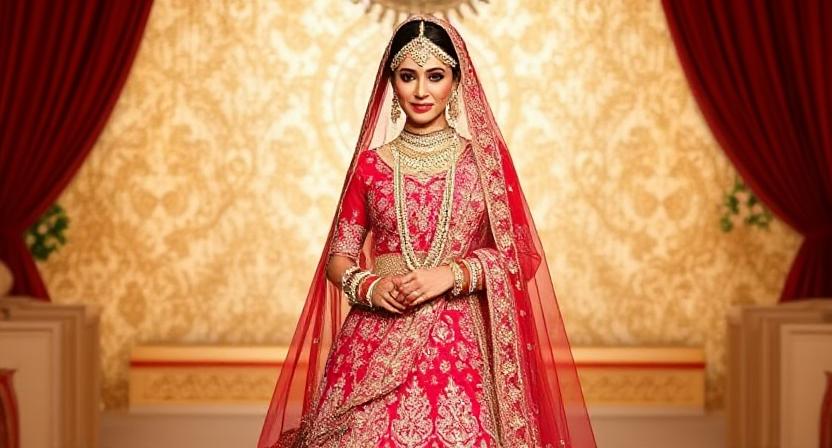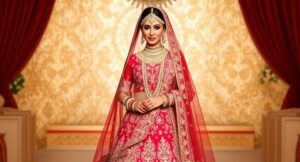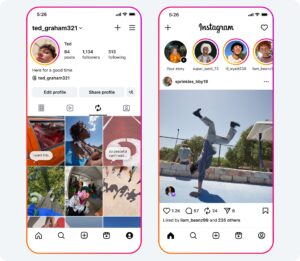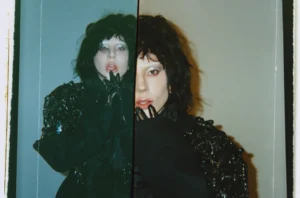Indian bridal wear is a magnificent blend of tradition, luxury, and cultural heritage. From elaborate silk sarees to intricately embroidered lehengas, every detail of an Indian bride’s attire tells a story of elegance, artistry, and symbolism. Weddings in India are grand affairs, and the bridal outfit is often the centerpiece, reflecting the bride’s personality, regional customs, and modern fashion trends.
In this guide, we’ll explore the history, types, fabrics, embroidery styles, color choices, and modern trends in Indian bridal wear, along with tips for choosing the perfect bridal outfit.
History and Significance of Indian Bridal Wear
The tradition of elaborate bridal attire in India dates back thousands of years. Ancient Indian weddings often featured richly woven garments in auspicious colors like red and gold, symbolizing love, prosperity, and fertility. The Mughal era introduced luxurious fabrics, intricate zardozi embroidery, and lavish ornamentation, influencing bridal fashion across the country.
Every region in India has its own bridal attire traditions:
-
Punjab & North India: Bridal lehengas with heavy zari and sequin work.
-
South India: Kanjeevaram silk sarees with gold borders.
-
West Bengal: Red and white Banarasi silk sarees.
-
Gujarat & Rajasthan: Ghagra cholis with mirror work and bandhani prints.
These traditions continue today, with modern brides blending heritage with contemporary style.
Popular Types of Indian Bridal Wear
Indian bridal wear offers a variety of styles, depending on cultural background and personal taste.
1. Bridal Lehenga Choli
A lehenga choli is one of the most popular bridal outfits in North India. It consists of a flared skirt (lehenga), a blouse (choli), and a dupatta. Bridal lehengas are adorned with heavy embroidery, sequins, beadwork, and intricate thread designs.
Popular Bridal Lehenga Styles:
-
Velvet lehengas for a royal look.
-
Pastel-colored lehengas with floral embroidery.
-
Red lehengas with traditional gold zari work.
2. Bridal Saree
In many Indian states, brides wear sarees for their wedding ceremonies. These sarees are often made of silk and decorated with handwoven designs.
Famous Bridal Saree Varieties:
-
Kanjeevaram Silk Saree (Tamil Nadu): Rich texture with temple motifs.
-
Banarasi Silk Saree (Varanasi): Heavy gold brocade and intricate weaving.
-
Paithani Saree (Maharashtra): Bright colors with peacock designs.
3. Anarkali Suit for Weddings
Some brides prefer heavily embroidered Anarkali suits, especially for pre-wedding events like sangeet or engagement. These floor-length outfits offer grace and comfort.
4. Indo-Western Bridal Outfits
Modern brides often experiment with fusion wear, such as saree gowns, lehenga skirts paired with crop tops, or jacket-style lehengas for a contemporary yet traditional look.
Fabrics Used in Indian Bridal Wear
Fabrics play a key role in the beauty and elegance of bridal outfits:
-
Silk: Traditional choice for grand ceremonies (Kanjeevaram, Banarasi).
-
Velvet: Luxurious and regal, ideal for winter weddings.
-
Georgette & Chiffon: Lightweight fabrics for evening functions.
-
Organza & Net: Used in modern lehengas for a delicate appeal.
Embroidery and Ornamentation in Bridal Wear
Indian bridal wear is famous for its intricate embellishments:
-
Zardozi Work: Gold and silver thread embroidery for royal elegance.
-
Resham Work: Colorful silk thread embroidery.
-
Mirror Work: Decorative mirrors embedded into the fabric, popular in Gujarat and Rajasthan.
-
Stone & Bead Embroidery: Adds shimmer and sparkle to bridal attire.
-
Sequin & Pearl Work: Elegant detailing for lehengas and sarees.
Bridal Wear Colors and Their Meanings
Traditionally, red is considered the most auspicious color for Indian brides, symbolizing love, power, and prosperity. However, modern brides now explore a wide range of colors:
-
Red & Maroon: Classic choices for traditional weddings.
-
Gold: Symbolizes wealth and grandeur.
-
Pastels (Peach, Mint, Lavender): Trendy and elegant for day weddings.
-
Ivory & White: Popular in Christian Indian weddings.
Indian Bridal Wear for Different Ceremonies
An Indian wedding consists of multiple events, each with its own dress code:
Engagement
-
Lightly embroidered saree or lehenga in pastel tones.
Mehendi
-
Vibrant yellow or green lehenga choli or salwar suit.
Sangeet
-
Glamorous lehenga or Indo-western gown for dancing comfort.
Wedding Day
-
Heavy silk saree or embellished lehenga in traditional colors.
Reception
-
Elegant gown, designer saree, or light lehenga with shimmer work.
Modern Trends in Indian Bridal Wear
Bridal fashion in India is evolving, blending tradition with contemporary design elements:
-
Minimalist Embroidery: Subtle elegance instead of heavy ornamentation.
-
Pastel Shades: Replacing traditional reds in many modern weddings.
-
Sustainable Fashion: Handloom fabrics, organic dyes, and eco-friendly materials.
-
Multi-layered Dupattas: For a regal and dramatic bridal look.
-
Personalized Embroidery: Initials, wedding dates, or meaningful symbols woven into the outfit.
Tips for Choosing the Perfect Indian Bridal Outfit
-
Know Your Tradition: Consider your cultural background and customs.
-
Choose Fabrics Wisely: Silk for traditional elegance, lighter fabrics for comfort.
-
Consider the Season: Velvet and silk for winter, chiffon and georgette for summer.
-
Pick a Flattering Color: Choose shades that complement your skin tone.
-
Plan for Comfort: Remember you’ll wear the outfit for hours, so comfort is key.
-
Coordinate with Jewelry: Ensure your accessories match the outfit’s style and embellishments.
Global Recognition of Indian Bridal Wear
Indian bridal wear is now recognized internationally. Celebrities and designers showcase lehengas and sarees at global fashion events. Bollywood movies have also played a huge role in popularizing Indian bridal fashion worldwide. Designers like Sabyasachi Mukherjee, Manish Malhotra, and Anita Dongre have taken Indian bridal wear to international runways.
Conclusion
Indian bridal wear is a stunning representation of tradition, craftsmanship, and personal style. Whether it’s a timeless red Banarasi saree, a regal velvet lehenga, or a pastel fusion gown, every bridal outfit carries the essence of Indian culture and beauty.
With a perfect blend of heritage and innovation, Indian bridal wear continues to evolve, making every bride look and feel like royalty on her special day.






